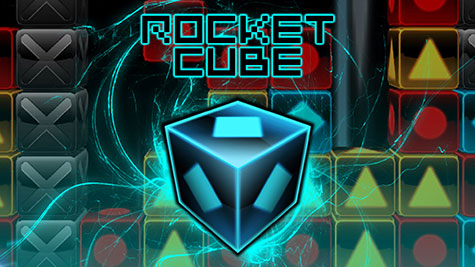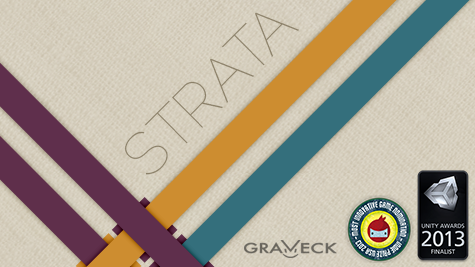Asynchronous multi-player is a genre that is big in the app stores and has proven to be very sticky. Yet, according to Rik Haandrikman, there can never be enough attention to the topic. At Casual Connect USA 2013, he presented a session on the genre, but felt that it needed a wider point of view than just his own. So he approached Casual Connect about presenting a panel on multi-player gaming for Casual Connect Europe 2014. The panel combined the knowledge of Phil Mansell (Jagex), Micha van der Meer (Exit Games), Jan-Michel Saaksmeier (BigPoint), Alfonso Villar (Playspace) and Haandrikman with the guidance of Paul Heydon, (Avista Partners) as host. Haandrikman believes the panel greatly outstripped anything he could have brought on his own. He hopes this panel will become a recurring part of the conference with more multi-player game developers participating in the discussion.
Rik Haandrikman, Director of Business Development at GamePoint, attributes his success in this career to “dumb luck.” He began doing community management at GamePoint, but was becoming restless within a couple of months. The opportunity to move up in the company came and, as he says, “I grabbed it with both hands.” His team’s responsibilities range from user acquisition to analyzing game metrics to improving every facet of the business. Most of his time is involved with growth strategy and operations.
He is ambitious for himself and for the company, insisting, “I want GamePoint to conquer the world, and I want to be there to lead the charge.”
“Market Research”
Of course, not all his time is involved in his career; he loves spending time with his family, claiming every minute he spends with his two-year-old daughter is a minute well spent. He also manages to find time for the gym. And he spends a lot of time doing ‘market research’, his name for his gaming habit.
Currently, Haandrikman’s ‘market research’ has him using his iPhone to play 99 Bricks, a game by the Dutch indie, Weirdbeard. He finds the game both addictive and challenging, using the strengths of iPhone perfectly, and he is excited to see what it will do after its international launch.
For his mobile gaming, he prefers iOS to Android, although he recognizes that Android has become a sizeable economic opportunity in the last two years, and Gamepoint is definitely developing for it. But he prefers the more curated experience iOS provides and finds the UI preferable to what most Android devices offer.
Haandrikman tells us the most interesting place he has played mobile games was in the Banda Islands, a tiny group of Indonesian islands with no real connection to any of the larger islands. They also have no TV, no internet, and lights out when the sun goes down. When he and his girlfriend passed their time in the evenings playing Civilization Revolution on their iPhones, they suddenly became very popular and the center of considerable excitement.
Even with the amount of mobile gaming he has “researched,” his favorite platform continues to be PC. Some of his favorite titles can only be properly played on PC. The title he plays most intensely is Civilization, having logged many hours on every version of the game.
His console gaming is fairly limited; he is still satisfied using his Xbox 360 and PS3. But his daughter’s desire to play Dora the Explorer usually trumps his plan for GTA V. He does plan to get Xbox One when it comes out in the Netherlands, considering it a family-friendly option.
Intersection of Creativity and Business
Haandrikman tells us what he enjoys most about the game industry is the intersection of creativity and business. He says, “We create things that bring joy to millions and get paid while doing it.” And wearing a Star Wars t-shirt to work is an added bonus.
Gamepoint is a good example of this at work. “We don’t simply build multi-player games, we sculpt an experience that entices players to connect,” Haandrikman says. “When you play one of our games, our aim is to have you enjoy that game, obviously, but more important, we aim to have you form relationships with other players. My proudest moments have been when I got to meet people for whom those relationships have been life-changing.”
As an example, he points to a family with two children who wouldn’t exist without the game that helped their parents to meet, saying it puts everything GamePoint does into perspective. He spends much of his time looking at data: seeing what the players do within the games, how much they chat and how many buddies they add. But he insists, “Seeing that data turn into actual people and change actual lives is amazing.”
Haandrikman has been in the game industry for seven years, and in that time he has learned it is impossible to predict what is around the next corner. So it is critical to be as agile as possible and always be ready to respond as soon as a trend emerges. GamePoint answer to this situation is investing heavily in research on new platforms, new concepts and new audiences. As he says, “When they pop up, we’ll be ready.”





 We decided to release Strata as a desktop version on the Mac App Store, Desura, Chrome, and Steam Greenlight. We found during development that it was still quite an enjoyable experience to play on your desktop. Releasing on these platforms allowed us to gain feedback before our main release on mobile platforms, and test out some new markets. Strata was featured on New and Noteworthy and What’s Hot on the Mac App Store for a couple weeks, and reached #1 in the Games category.
We decided to release Strata as a desktop version on the Mac App Store, Desura, Chrome, and Steam Greenlight. We found during development that it was still quite an enjoyable experience to play on your desktop. Releasing on these platforms allowed us to gain feedback before our main release on mobile platforms, and test out some new markets. Strata was featured on New and Noteworthy and What’s Hot on the Mac App Store for a couple weeks, and reached #1 in the Games category.






